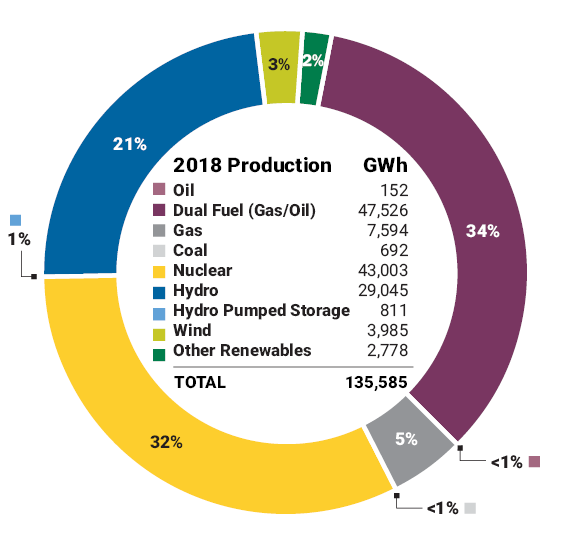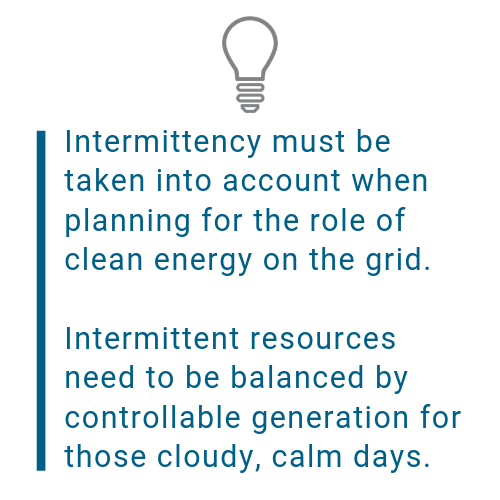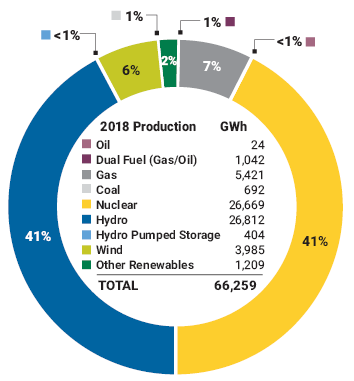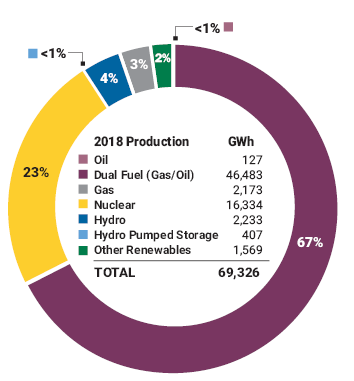Fuel for the Wire: How We Make Energy in New York

Where does your energy come from? In New York State, the sources of energy are as a diverse as the people who live here.
The biggest slice, roughly one third, comes from dual-fuel generators, which are primarily fueled by natural gas, but with capabilities to use other fuels, like oil. Other large contributors include nuclear power and hydropower. Wind power, other renewables and energy storage make up much smaller, but growing segments.
Why is a diverse fuel mix important?
Fuel mix affects both the reliability of the electric system and the price of power. A balanced array of resources enables the electric system to better address issues such as price volatility, fuel availability and requirements of public policy.
The amount of energy produced by each fuel source depends on a variety of factors:
- Upstate, with its abundance of land and water, has more clean energy generation.
- Downstate sees more generation from large-scale power plants that run primarily on fossil fuels.
- The amount that comes from each source also varies from day-to-day and season-to-season, depending on such factors as power demand, conditions on the transmission system, or the availability of wind.
GRAPHIC: Energy Production in New York State by Fuel Source - Upstate and Downstate New York 2018. Source: Power Trends 2019
Market factors have significant influence on the mix of generation technologies and fuels used to produce power. For instance, the lower cost of natural gas has driven significant development of gas-fired generation, and placed economic pressure on other resources that rely on more expensive fuels. But relying too much on natural gas has its limitations, especially in wintertime, when natural gas is also needed for heating. That’s why many downstate power plants are dual-fuel, which allows them to run on oil when necessary, providing benefits in fuel diversity, reliability and power costs.
Not all clean energy sources are equal. For instance, it takes 3 megawatts (MW) of wind capacity to produce the same amount of energy as 1 MW of hydro over the course of the year. That’s because wind is intermittent (as is solar); leaving energy production dependent on ever-changing weather conditions, while production from hydro resources is more controllable.
As we continue to move toward what we call the “Grid of the Future,” we are beginning to address the market signals and transmission upgrades necessary to provide this balance across the grid. One approach is to expand the role of energy storage in our markets to help make better use of clean energy that comes from intermittent sources.
In short, a well-balanced fuel mix makes for a happy grid.
For more on how a diverse fuel portfolio helps to keep consumer prices low and meet generation needs, see our eBook The Power of New York's Electricity Markets.
Visit the Power Trends 2019: Reliability and a Greener Grid web page for more information on the state of the grid.




